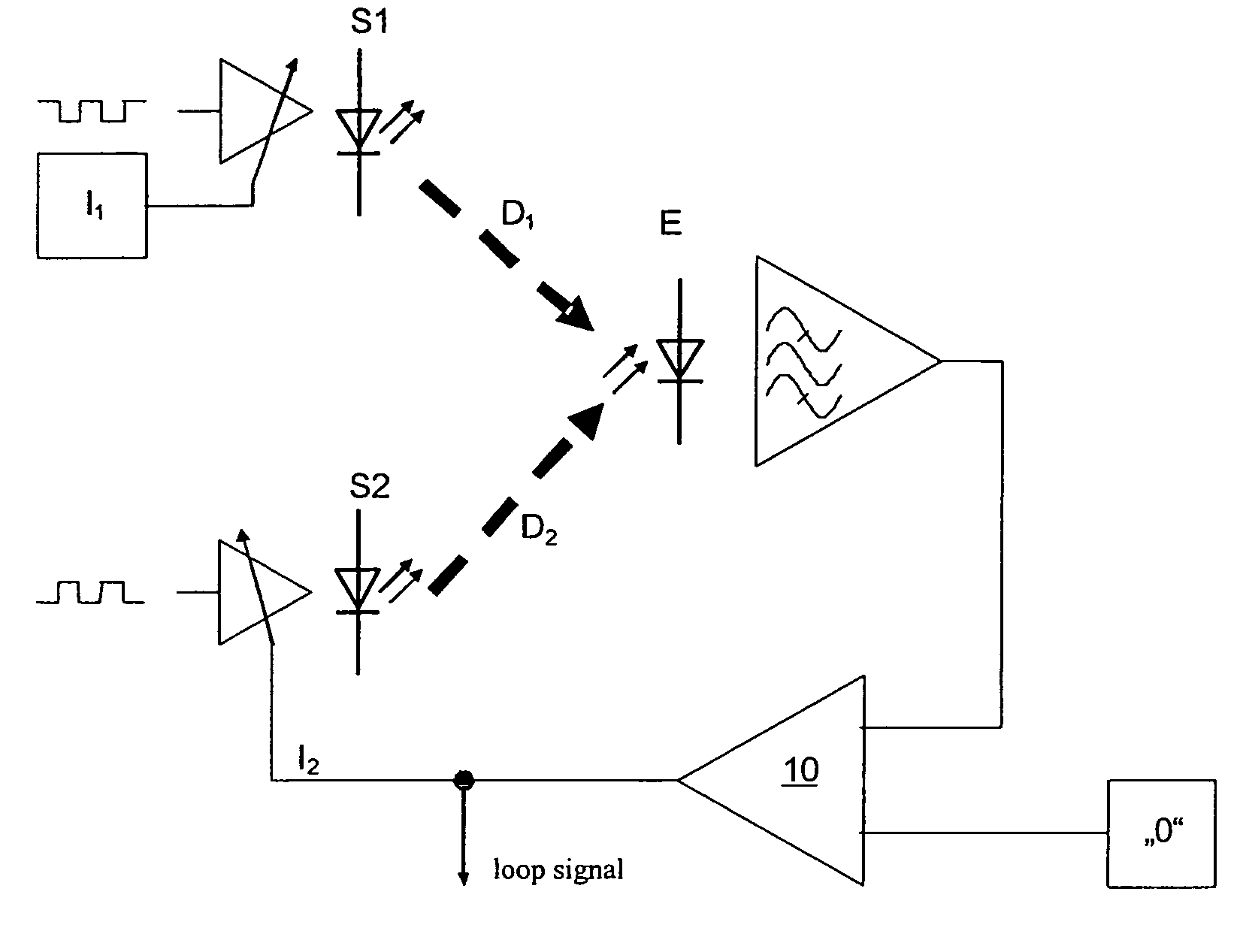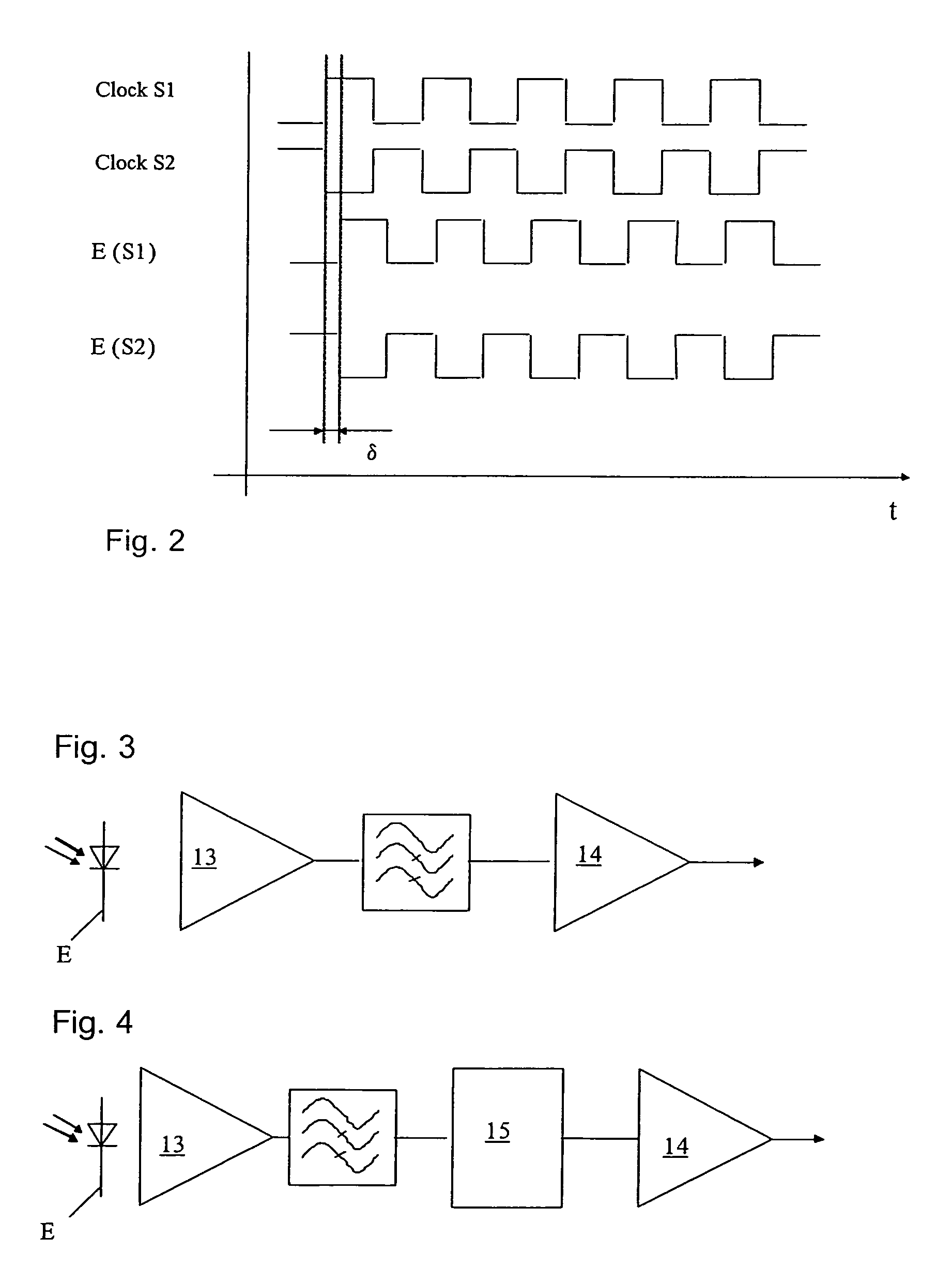Method of determining and/or evaluating a differential optical signal
a technology of differential optical signal and determining method, which is applied in the direction of optical detection, optical radiation measurement, instruments, etc., can solve the problem of inability to reliably evaluate the incoming signal, and achieve the effect of any loss of sensitivity
- Summary
- Abstract
- Description
- Claims
- Application Information
AI Technical Summary
Benefits of technology
Problems solved by technology
Method used
Image
Examples
Embodiment Construction
[0034]The invention is now described in detail by way of example with reference to the accompanying drawings. However the embodiments are only examples, which are not intended to limit the inventive concept to a specific arrangement.
[0035]The figures show a method for determining and / or evaluating a differential optical signal with at least two first light sources S1, S2 which emit light in a sequentially phased manner. At least one receiver E is provided to receive the signal thus emitted, this receiver receiving a sequentially emitted alternating light component from the first light sources S1, S2. The light intensity which is irradiated in the measuring arrangement through at least one light source S1, S2, which may also be a compensation light source K, is then regulated such that the clock-synchronous alternating light component, which occurs between the different phases, becomes zero at the receiver E. This was illustrated in detail at the outset in the introductory part of th...
PUM
 Login to View More
Login to View More Abstract
Description
Claims
Application Information
 Login to View More
Login to View More - R&D
- Intellectual Property
- Life Sciences
- Materials
- Tech Scout
- Unparalleled Data Quality
- Higher Quality Content
- 60% Fewer Hallucinations
Browse by: Latest US Patents, China's latest patents, Technical Efficacy Thesaurus, Application Domain, Technology Topic, Popular Technical Reports.
© 2025 PatSnap. All rights reserved.Legal|Privacy policy|Modern Slavery Act Transparency Statement|Sitemap|About US| Contact US: help@patsnap.com



